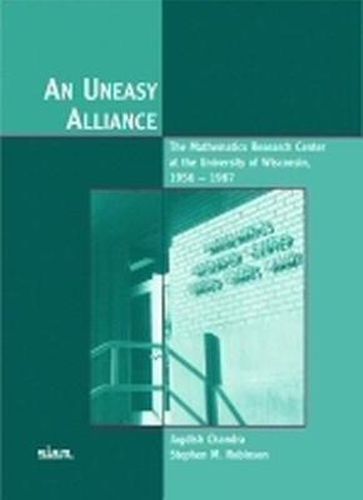Readings Newsletter
Become a Readings Member to make your shopping experience even easier.
Sign in or sign up for free!
You’re not far away from qualifying for FREE standard shipping within Australia
You’ve qualified for FREE standard shipping within Australia
The cart is loading…






In the post World War II era, the Mathematics Research Center (MRC) was one of the earliest comprehensive examples of collaboration between the government and a university. By taking a broad view of mathematics that embraced both the pure and applied branches, the MRC provided a model of an interdisciplinary effort that interacted very well with the spectrum of sciences. This book deals with the complex and challenging organizational and scientific issues that arose in the operation of this center. When viewed abstractly, interdisciplinary research is a good idea. Even in a broad discipline like mathematical sciences, many scientific advances have occurred at the interfaces of various subdisciplines. However, the promotion of an interdisciplinary research in an academic environment has always been a major challenge. As the rich experience at the MRC has clearly shown, such interdisciplinary research crosses different intellectual cultures including science and engineering. The book attempts an honest assessment of how successful it was at the MRC and what attendant lessons are to be learned. But this book is not a purely historical account of what happened at the MRC. Rather, it uses history as a vehicle to draw useful conclusions for current and future generation of developers, practitioners, consumers and sponsors of applied mathematics.
$9.00 standard shipping within Australia
FREE standard shipping within Australia for orders over $100.00
Express & International shipping calculated at checkout
In the post World War II era, the Mathematics Research Center (MRC) was one of the earliest comprehensive examples of collaboration between the government and a university. By taking a broad view of mathematics that embraced both the pure and applied branches, the MRC provided a model of an interdisciplinary effort that interacted very well with the spectrum of sciences. This book deals with the complex and challenging organizational and scientific issues that arose in the operation of this center. When viewed abstractly, interdisciplinary research is a good idea. Even in a broad discipline like mathematical sciences, many scientific advances have occurred at the interfaces of various subdisciplines. However, the promotion of an interdisciplinary research in an academic environment has always been a major challenge. As the rich experience at the MRC has clearly shown, such interdisciplinary research crosses different intellectual cultures including science and engineering. The book attempts an honest assessment of how successful it was at the MRC and what attendant lessons are to be learned. But this book is not a purely historical account of what happened at the MRC. Rather, it uses history as a vehicle to draw useful conclusions for current and future generation of developers, practitioners, consumers and sponsors of applied mathematics.